At Center for Independent Futures, our Life Skills Tutors commit to providing person-centered planning and life skills development. From day one, we have understood the power of asking an individual, “What are your hopes and dreams?” We are proud to have been one of the first agencies in Illinois to put the individual at the heart of our services. As more agencies ask themselves how to implement person-centered services, we want to share our experiences with you.
What is Person-Centered Planning?
 Historically, people with disabilities were institutionalized and excluded from society. However, over time American society has come to realize that institutions are not the answer. Moving away from institutions, states have largely chosen their own standards of care and have created new policies at varying rates.
Historically, people with disabilities were institutionalized and excluded from society. However, over time American society has come to realize that institutions are not the answer. Moving away from institutions, states have largely chosen their own standards of care and have created new policies at varying rates.
Person-centered planning is one of these policies that states are implementing at different speeds. At the core of this policy lies an individual’s vision for their own future. The goal of person-centered planning is to support an individual with disabilities in creating the future of their dreams. A tutor or team then decides on necessary supports based on individual goals.
These personalized support plans are never cookie-cutter designs. They are based on individual dreams, and then enacted using individualized support options. Because person-centered care is radically different from traditional supports for people with disability, sometimes agencies struggle with this change and wonder: how can we implement these ideas?
How Does Person-Centered Work?
 In our office, we think of person-centered care as continued evaluation of a person’s hopes and dreams – and the action steps necessary to achieve their goals. With our participants, we begin by meeting with the individual’s support group, made up of family, friends, and community members.
In our office, we think of person-centered care as continued evaluation of a person’s hopes and dreams – and the action steps necessary to achieve their goals. With our participants, we begin by meeting with the individual’s support group, made up of family, friends, and community members.
We begin by asking about hopes and dreams, and then we identify obstacles and assets. This information helps to define goals and create action plans. Throughout this process, we listen, look, and learn to understand how we can best help someone create and reach goals.
Supplemented by our skills inventory and curriculum, individuals work with tutors to identify what life skills can help attain goals. Each part of person-centered care requires reflection and revision from time to time. As skills develop or dreams change, these plans have to be flexible enough to allow for new ideas.
Want to Learn More?

In the last 5 years, Illinois mandated that by 2022 all agencies must use person-centered planning to work with their participants and clients. For agencies and educators, we offer our My Full Life™ online application. My Full Life includes an in-depth skills inventory, plus the most comprehensive skills curriculum available.
If you are interested in learning more, please visit our Schools & Agencies page and request more information through our My Full Life form. We can’t wait to help you on the journey to providing person-centered care.

 When you ride with Center for Independent Futures’ Dream Team, you’ll be part of a team of individuals with and without disabilities, including participants, staff, board members, and friends. Our team members participate in this incredible event and raise funds for our programs and services in honor of their ride. Center for Independent Futures makes it easy to participate by supporting riders to sign up for the event, helping with fundraising, and taking care of transportation logistics on the day of the event.
When you ride with Center for Independent Futures’ Dream Team, you’ll be part of a team of individuals with and without disabilities, including participants, staff, board members, and friends. Our team members participate in this incredible event and raise funds for our programs and services in honor of their ride. Center for Independent Futures makes it easy to participate by supporting riders to sign up for the event, helping with fundraising, and taking care of transportation logistics on the day of the event. We
We  For the first time, we will be offering Golden Tickets to our community! Golden Tickets are a new way to participate in our favorite night of the year. There will only be 150 Golden Tickets sold, so you know what your chances of winning are! If you purchase a Golden Ticket, please make sure that you have selected your prize at the time of purchase. Winners need not be present to win. Each Golden Ticket is $100, and the prize is something special!
For the first time, we will be offering Golden Tickets to our community! Golden Tickets are a new way to participate in our favorite night of the year. There will only be 150 Golden Tickets sold, so you know what your chances of winning are! If you purchase a Golden Ticket, please make sure that you have selected your prize at the time of purchase. Winners need not be present to win. Each Golden Ticket is $100, and the prize is something special!  Enjoy a weeklong vacation at Villa Vista Magnifica in Costa Rica, overlooking the Pacific Ocean and gorgeous beaches Playa Prieta and Playa Penca. Villa Vista Magnifica is a 5 bedroom, 5.5 bath villa staffed with 2 full-time employees. You and 9 of your friends can relax in luxury with such features as an outdoor shower, a private patio, an infinity edge pool, and an upstairs terrace view. Airfare not included; average airfare to Costa Rica is $450 per person. High season is from May through July.
Enjoy a weeklong vacation at Villa Vista Magnifica in Costa Rica, overlooking the Pacific Ocean and gorgeous beaches Playa Prieta and Playa Penca. Villa Vista Magnifica is a 5 bedroom, 5.5 bath villa staffed with 2 full-time employees. You and 9 of your friends can relax in luxury with such features as an outdoor shower, a private patio, an infinity edge pool, and an upstairs terrace view. Airfare not included; average airfare to Costa Rica is $450 per person. High season is from May through July. Four seats to your choice of two 2019 games decided upon in conjunction with the donor. These seats offer an extraordinary opportunity to experience Wrigleyville’s favorite team from premium seats only 10 rows behind home plate.
Four seats to your choice of two 2019 games decided upon in conjunction with the donor. These seats offer an extraordinary opportunity to experience Wrigleyville’s favorite team from premium seats only 10 rows behind home plate. Tickets are on sale
Tickets are on sale 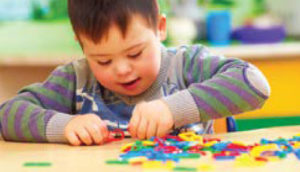 Self-determination skills are developed through a combination of skills, knowledge, and beliefs. Those pieces of self-determination help people engage in goal-directed, self-regulated, autonomous activity. Learning how to act in a self-directed manner empowers every student who gains these skills.
Self-determination skills are developed through a combination of skills, knowledge, and beliefs. Those pieces of self-determination help people engage in goal-directed, self-regulated, autonomous activity. Learning how to act in a self-directed manner empowers every student who gains these skills. Invest time in facilitating student-driven IEPs and transition planning, and check in with students to make sure they are prepared for meetings. All students are capable of being involved in planning their life.
Invest time in facilitating student-driven IEPs and transition planning, and check in with students to make sure they are prepared for meetings. All students are capable of being involved in planning their life. As a Harvard fellow, Micaela researched how to create communities and housing that included people of all abilities, and the answers led her to create The Kelsey.
As a Harvard fellow, Micaela researched how to create communities and housing that included people of all abilities, and the answers led her to create The Kelsey.
 though my classmates with disabilities disappeared after high school.” He had friends and classmates with intellectual and developmental disabilities in high school, but in college and professional life, those individuals and relationships virtually evaporated.
though my classmates with disabilities disappeared after high school.” He had friends and classmates with intellectual and developmental disabilities in high school, but in college and professional life, those individuals and relationships virtually evaporated. Kids that started kindergarten in 1990 with the passage of IDEA are in their early 30’s today. These Inclusion Natives, of all abilities, are now young professionals moving to new cities, graduate students looking for housing, and renters looking for apartments with the best amenities. Their early understanding of inclusion, genuine appreciation of diversity, and subsequent desire to
Kids that started kindergarten in 1990 with the passage of IDEA are in their early 30’s today. These Inclusion Natives, of all abilities, are now young professionals moving to new cities, graduate students looking for housing, and renters looking for apartments with the best amenities. Their early understanding of inclusion, genuine appreciation of diversity, and subsequent desire to 
 Every person has a complex identity that is made up of many parts, which can sometimes come into conflict. Those way those parts of your identity work together are known as
Every person has a complex identity that is made up of many parts, which can sometimes come into conflict. Those way those parts of your identity work together are known as 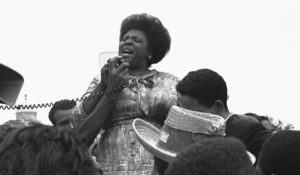 Fannie Lou Hamer was born in Mississippi at the beginning of the twentieth century. She was born into a family of sharecroppers, and she picked cotton for the first part of her life. Over the course of her life, she became a leader of the Civil Rights Movement, a powerful speaker who engaged crowds much like Dr. Martin Luther King Jr. did.
Fannie Lou Hamer was born in Mississippi at the beginning of the twentieth century. She was born into a family of sharecroppers, and she picked cotton for the first part of her life. Over the course of her life, she became a leader of the Civil Rights Movement, a powerful speaker who engaged crowds much like Dr. Martin Luther King Jr. did.  The obstacles that come along with being both black and having a disability have not ended since Hamer’s death in 1977. Today, a leader for the black disability community is Vilissa Thompson, creator of the
The obstacles that come along with being both black and having a disability have not ended since Hamer’s death in 1977. Today, a leader for the black disability community is Vilissa Thompson, creator of the 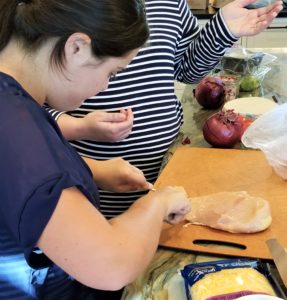 For the past twelve years, Cynthia Witherspoon has been working with the Full Life Model, developing tools and resources. She is an expert in our online application for life skills development,
For the past twelve years, Cynthia Witherspoon has been working with the Full Life Model, developing tools and resources. She is an expert in our online application for life skills development,  My Full Life Director Chrissy Dale also escaped to California during Chicagoland’s intense cold. Chrissy presented at the Tools For the Journey conference, hosted by Club 21. Using our Skills Inventory as a Road Map to Independence, Chrissy demonstrated how families can support the growth and development of their child.
My Full Life Director Chrissy Dale also escaped to California during Chicagoland’s intense cold. Chrissy presented at the Tools For the Journey conference, hosted by Club 21. Using our Skills Inventory as a Road Map to Independence, Chrissy demonstrated how families can support the growth and development of their child. 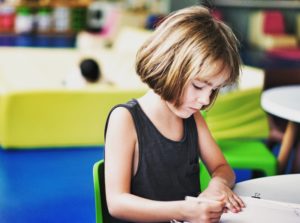 Learning self-advocacy means developing a set of skills that are based on self-knowledge, communicating your understanding, and knowing your rights. When educators teach self-advocacy skills to students with disabilities, that knowledge opens doors to success that might otherwise never have appeared.
Learning self-advocacy means developing a set of skills that are based on self-knowledge, communicating your understanding, and knowing your rights. When educators teach self-advocacy skills to students with disabilities, that knowledge opens doors to success that might otherwise never have appeared.  Begin by understanding the students’ strengths and weaknesses. Teachers can conduct a skills assessment, and then they should try to focus on the strengths. Starting with strengths helps students refrain from internalizing low expectations. With a solid understanding of their talents, students will leave class with greater self-awareness.
Begin by understanding the students’ strengths and weaknesses. Teachers can conduct a skills assessment, and then they should try to focus on the strengths. Starting with strengths helps students refrain from internalizing low expectations. With a solid understanding of their talents, students will leave class with greater self-awareness. Teachers who want to support students in upholding their rights should try to create learning activities that engage all of their students on this topic. Some schools are beginning to move toward
Teachers who want to support students in upholding their rights should try to create learning activities that engage all of their students on this topic. Some schools are beginning to move toward 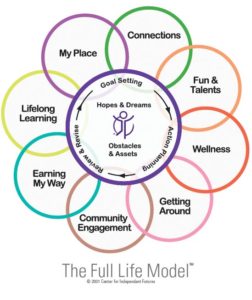 Teaching current students how to advocate for themselves is obviously crucial to their post-school success. But what about adults with disabilities who weren’t taught self-advocacy skills in school? My Full Life™ can help. An online learning management system,
Teaching current students how to advocate for themselves is obviously crucial to their post-school success. But what about adults with disabilities who weren’t taught self-advocacy skills in school? My Full Life™ can help. An online learning management system,







